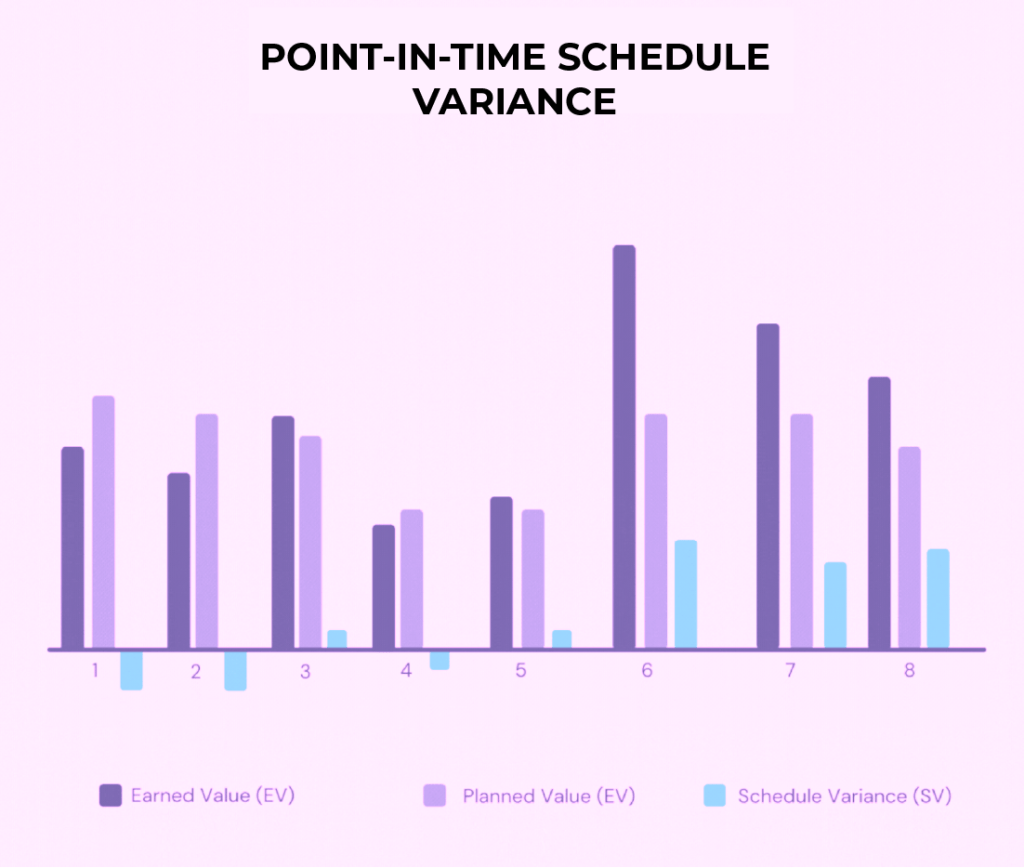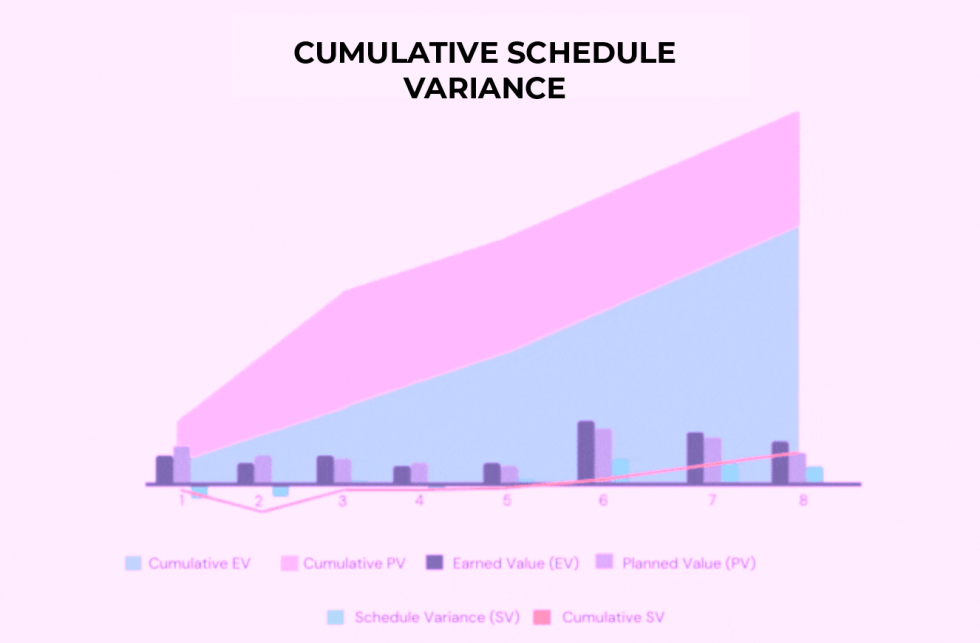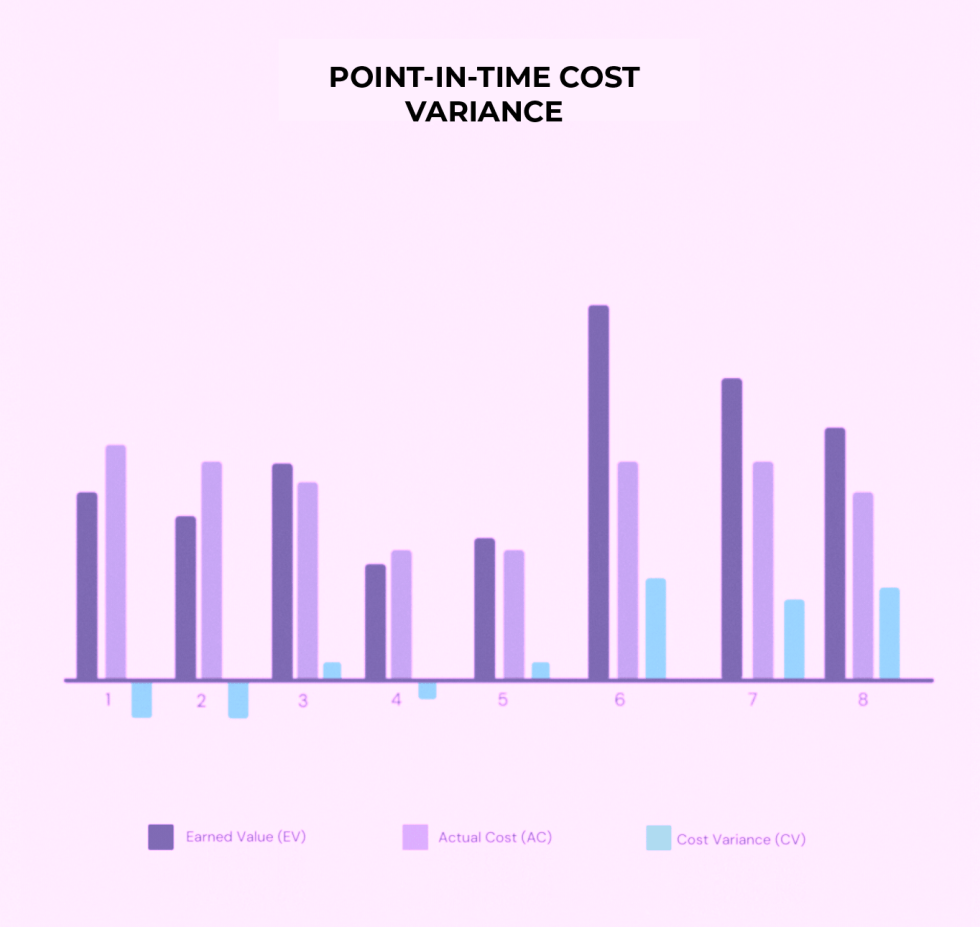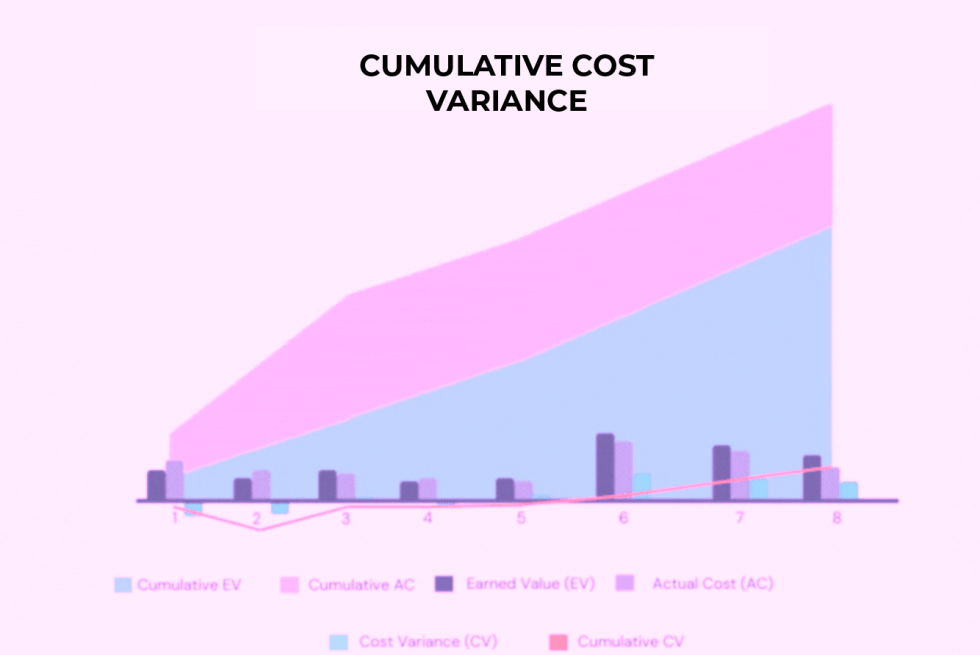Project Management Guide
Project Management Guide
What Is Project Management?
What Is a Project?
Why Is Project Management Important?
Project Life Cycle Phases
- Project Initiation
- Project Planning
- Project Execution
- Project Monitoring
- Project Closure
Project Management Methodologies
- Waterfall Project Management
- Critical Path Method
- Critical Chain Project Management
- Agile Project Management
- Scrum Project Management
- Kanban Project Management
- Lean Project Management
- Six Sigma Project Management
- PRINCE2
- PRiSM
- PMBOK Method
Project Management FAQ
What Is Cost Variance in Project Management?
Ask any project manager about what most enables the success of a project, and the majority of them will unanimously quip with project variance analysis.
Businesses can’t operate for free. And in a fiercely capitalist environment where value always comes down to money, the budget of a project assumes utmost significance for the overall project and operational planning. It is here that project variance analysis plays a crucial role in the productive makings of a project. It provides early evidence of potential issues afoot so that PM(s) can correct them before they occur.
Of the number of vital measures that are a part of variance analysis, one metric that holds special significance is the cost variance (CV) total. This metric is fairly straightforward to determine but can have a huge effect on what managers do.
What Is Cost Variance in Project Management?
Cost variance, otherwise also known as budget variance, is one of the most fundamental aspects of Earned Value Management (EVM). It is a standard of the variance analysis technique and is used to measure the disparity between the earned value (EV) and actual costs (AC) of a project.
Cost variance is a highly essential metric that helps you ascertain the financial performance of a project by comparing the project’s predefined budget against the actual cost incurred at any given point in time. In EVM, cost variance is calculated for expense line items, but it can also be done for project levels or jobs too, as long as there exists a yardstick against which it can be calculated.
As said above, value almost always comes down to money in variance analysis, regardless of if the commodity is time or actual legal tender. It is on the basis of these commodities that the success of any project hinges. Variance analysis helps you monitor them so that you know if you are heading in the right direction or not and take corrective measures if a project is going to take longer or require more capital than the approved budget.
Earned Value Management and Its Importance in Project Management
EVM is a technique that is used to determine project performance holistically and concentrates on budget, scope, and schedule measurement against the project’s baseline. According to the PMBOK, this baseline is employed as a reference for the cyclical procedure of calculating project efficiency and development on the basis of schedule variance (SV) and cost variance (CV).
Schedule variance and cost variance are the two most crucial benchmarks in EVM and help you assess the project’s progress in terms of cost and schedule. This information is usually derived from three basic elements, namely:
- Earned value (EV): the value of work completed to date
- Planned value (PV): funds that should have been spent according to the schedule
- Actual cost (AC):?the actual funds spent on the project till the present moment
What Is Schedule Variance (SV) and How to Calculate It
Schedule variance is a term used to denote the disparity between the earned value and the planned value of the project. It can be found out by subtracting planned value from earned value.
Schedule Variance (SV) = Earned Value (EV) – Planned Value (PV)
The value of schedule variance usually falls under the following ranges:
- if SV < 0, schedule variance is negative, and you are behind schedule
- if SV > 0, schedule variance is positive, and you are ahead of schedule
- if SV = 0, you are on schedule
After the project has been completed, SV becomes zero since all planned value has been earned. Usually, there are two types of schedule variances:
- point-in-time schedule variance
- cumulative schedule variance
Point-in-time Schedule Variance
Point-in-time schedule variance is the difference between planned value and earned value with respect to a specific period. It is calculated as:
SV(period) = EV(period) – PV(period)
Example: If you are computing SV for the third month, the SV for the second and fourth months shouldn’t be taken into account.

Cumulative Schedule Variance
Cumulative SV refers to the disparity between earned and planned values over the course of numerous periods. It is calculated in either of the following ways:
SV(cumulative) = EV(cumulative) – PV(cumulative)
or
SV(cumulative) = Sum of SV(all periods)
Example: If you wish to compute the cumulative SV for periods 3-5, you will have to take the sum up of period-by-period SV(s) of periods 3-5.

Example of Schedule Variance (SV)
A project has a budgeted cost of $800,000 and is to be completed in 10 months. After a month, the project is 20% completed at an expense of $200,000 as opposed to the planned completion that was 40%.
Planned Value (PV) = 40% of 800,000 USD = 320,000 USD
Earned Value (EV) = 20% of 800,000 USD = 160,000 USD
Actual Cost (AC) = 2000,000 USD
SV = EV – PV
SV = 160,000 – 320,000 = – 160,000 USD
Conclusion: SV is negative, and the project is behind schedule.
How to Calculate Cost Variance
How to Calculate Cost Variance Where schedule variance informs you of your progress apropos to the project schedule, cost variance helps you determine if your project is overshooting the established budget or not. It is calculated as:
Cost variance (CV) = Earned value (EV) – actual cost (AC); where
Earned value (EV) = (% of work completed) x (Budget)
Actual cost (AC) = total amount spent on the project
Similar to schedule variance, cost variance can either be positive, negative or zero.
- if CV < 0, there has been a cost overrun
- if CV > 0, the earned value has exceeded the actual cost
- if CV = 0, the budget has been met, and earned value is equal to the actual cost
Here, earned value is the section of the budget allocated to work completed in a period or cumulatively across numerous periods. The actual cost refers to the funds spent to perform the authorized work. Generally, cost variance has three types, namely:
- point-in-time cost variance
- cumulative cost variance
- variance at completion
Point-in-time Cost Variance
The easiest kind of cost variance, it refers to the difference between earned value and actual cost within a period. Its formula is given by:
CV(period) = EV(period) – AC(period)
Example: If you are in Month 2, you will determine the point-in-time cost variance by using the earned value (EV) and the actual cost (AC) of the second month only.

Cumulative Cost Variance
The cumulative CV provides a measure of the difference between the actual cost figures of numerous periods and the cumulative earned value. Its formula is given by:
CV(cumulative) = EV(cumulative) – AC(cumulative)
or
CV(cumulative) = Sum of CV(all periods)
Example: If you wish to evaluate the cumulative CV of the fourth month, you will have to compute the cumulative EV and the cumulative AC of the first four months.

Variance at Completion (VAC)
The variance at completion (VAC) is defined as the cumulative CV at the completion of a project. Its computing parameters are the estimated cost at completion (EAC) and the budget at completion (BAC).
Example of Cost Variance (CV)
A developer wants to complete her project within nine months at a cost of 700,000 USD. After four months, 450,000 USD has been spent and 20% of the project has been developed. What is the project’s CV?
Actual cost (AC) = 450,000 USD
Earned Value (EV) = 20% of 700,000 USD = 140,000 USD
CV = EV – AC
CV = 140,000 – 450,000 = – 310,000 USD
Conclusion: CV is negative, and the project is over budget.
Manage CV With Xebrio
Forward-thinking project managers know the significance of efficient variance analysis for operational planning and goal management. Xebrio helps you deliver on both of them so that you can be more productive and achieve more.
The Xebrio project management platform allows you to easily analyze, manage, and report on work. With Xebrio, you can give an account of key metrics and gain real-time insight into work with automated workflows and dashboards to keep your team connected and informed.
